A Journey Through Cinematography's Aesthetic Evolution
From flickering silent films to immersive CGI worlds, cinematography transcends mere technicality to become a potent storytelling medium. It's the art of light, movement, and composition, shaping emotions, sparking imagination, and molding cultures worldwide.

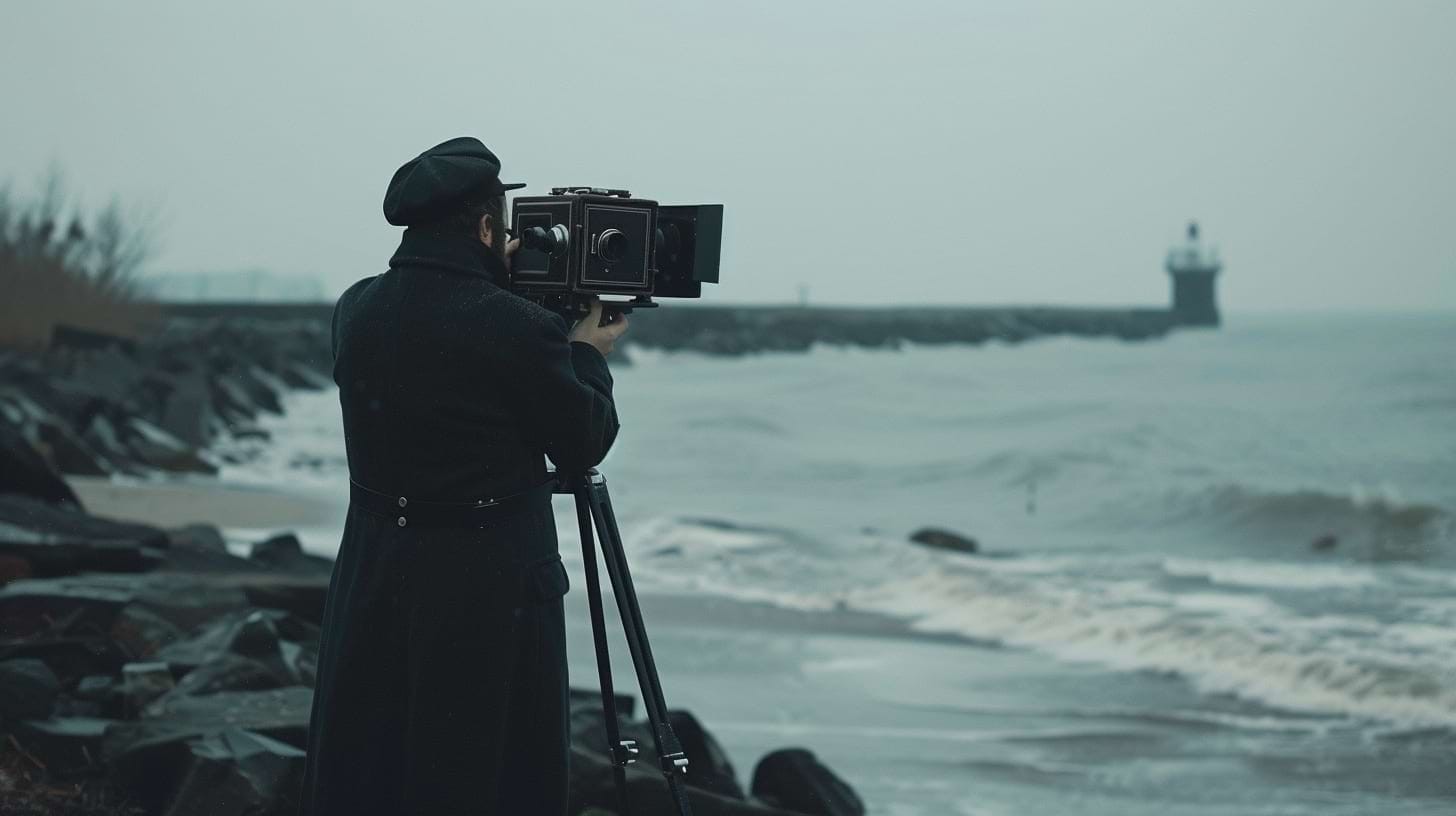
Cinematography is the art and technique of capturing moving images on film or digitally. It involves various elements such as camera movement, framing, lighting, and composition to create visually compelling scenes that convey the intended mood, atmosphere, and narrative of a film.
Cinematography has played a crucial role in shaping the evolution of storytelling and visual aesthetics in film history. From the early experiments with motion pictures to the golden age of Hollywood and the modern era of digital filmmaking, cinematographers have continuously pushed boundaries, innovated techniques, and pioneered new visual styles. Their contributions have enhanced the artistic quality of films and influenced cultural trends and societal perspectives.
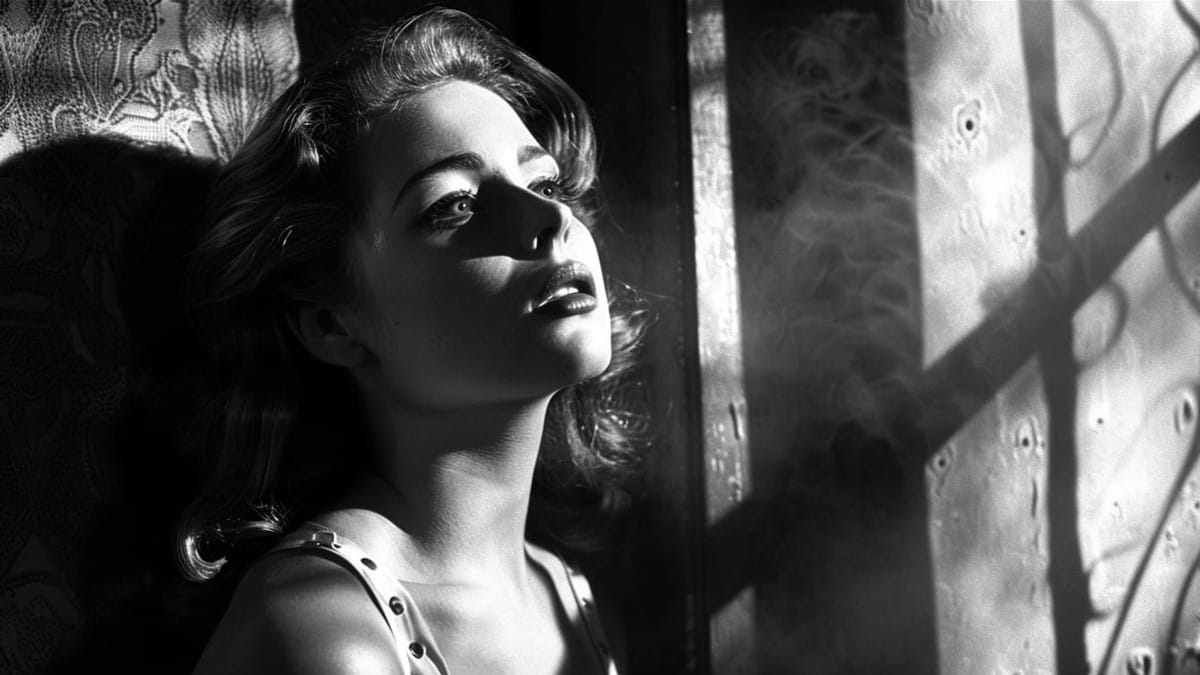
Ready to streamline your filmmaking process and unlock the full potential of your story?
Explore Filmustage today and experience the future of filmmaking.
The Dawn of Cinematography 🎥🌅
In the late 19th century, amidst a flurry of scientific and technological advancements, a revolutionary invention emerged that would forever change the landscape of visual storytelling: the motion picture camera.
Early Experiments and Innovations💡
Before the Lumière brothers' breakthrough, inventors and scientists had been experimenting with various techniques to capture motion, including the zoetrope, the phenakistoscope, and the chronophotographic gun.
Eadweard Muybridge's pioneering work in motion studies, particularly his famous "horse in motion" photographs, laid the foundation for the development of moving pictures.
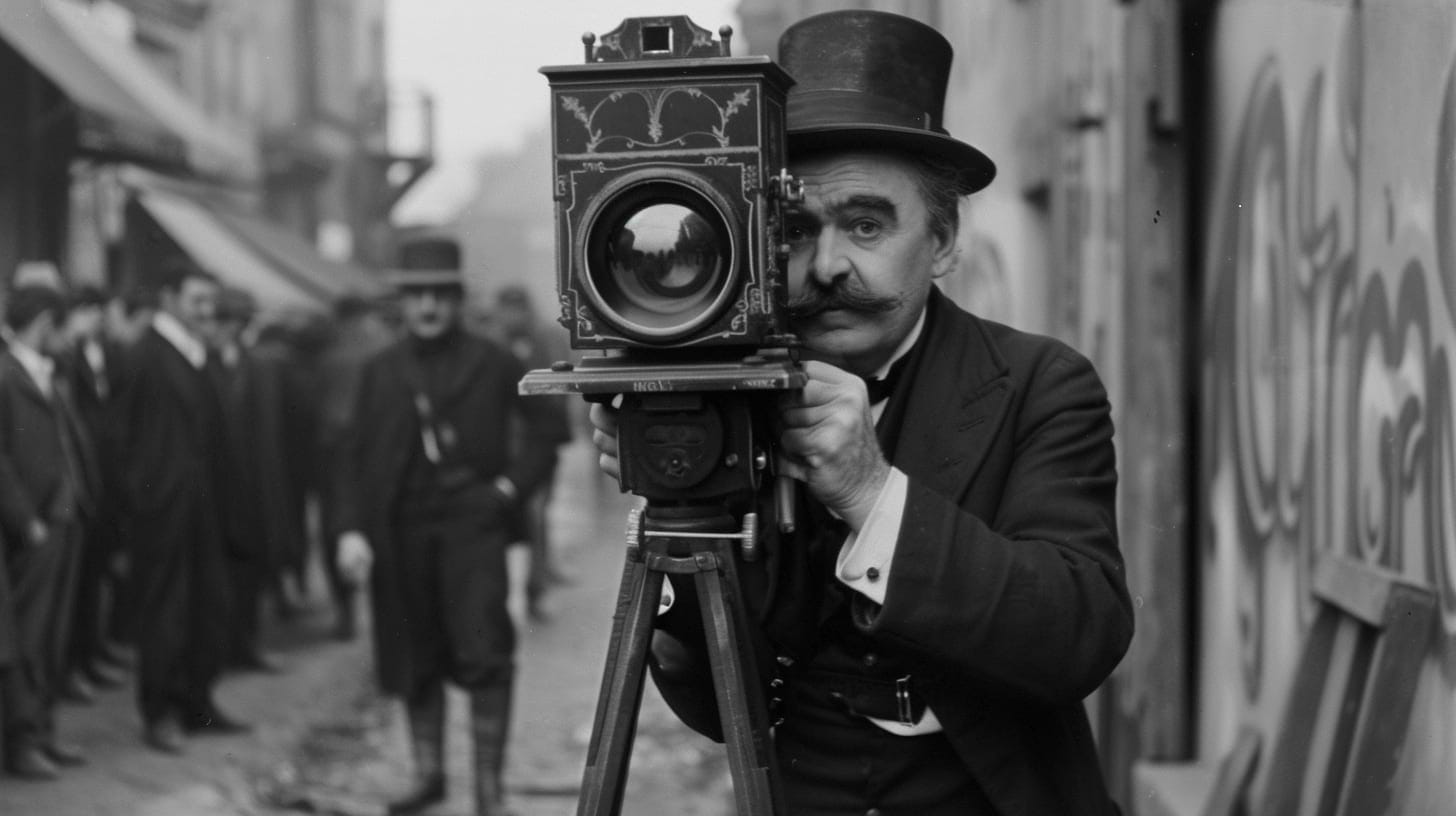
The Lumière Brothers and the Birth of Cinema 🎥
Brothers Auguste and Louis Lumière, French inventors and filmmakers, are credited with the invention of the cinematograph, a groundbreaking device that could both capture and project moving images.
On December 28, 1895, they held the first public screening of films using the cinematograph, marking the official birth of cinema.
From Celluloid to Silver Screen 🎞️
The invention of flexible, transparent celluloid film by George Eastman in the late 19th century provided filmmakers with a lightweight and portable medium for capturing images.
Innovations such as the development of perforated film stock by Thomas Edison and William Kennedy Laurie Dickson's creation of the Kinetoscope paved the way for the commercialization of cinema.
The Language of Silent Film 📽️
Silent films of the early 20th century relied heavily on visual storytelling techniques, utilizing composition, lighting, and editing to convey narrative and emotion.
Filmmakers like Georges Méliès and D.W. Griffith pushed the boundaries of cinematic expression, experimenting with special effects, narrative structure, and editing techniques.
Black and white films ⚫⚪
Examining the historical evolution of cinematography reveals the unique aesthetics of black-and-white film. This era was often characterized by:
- Static camera positions: Cameras were often mounted on tripods, resulting in fixed shots.
- Theatrical compositions: Actors performed on sets designed for stage plays, leading to a sense of artificiality.
- Dramatic lighting: Strong contrasts of light and shadow created a sense of depth and drama.
✨ The emergence of cinema as a popular form of entertainment captivated audiences worldwide, transcending language and cultural barriers.
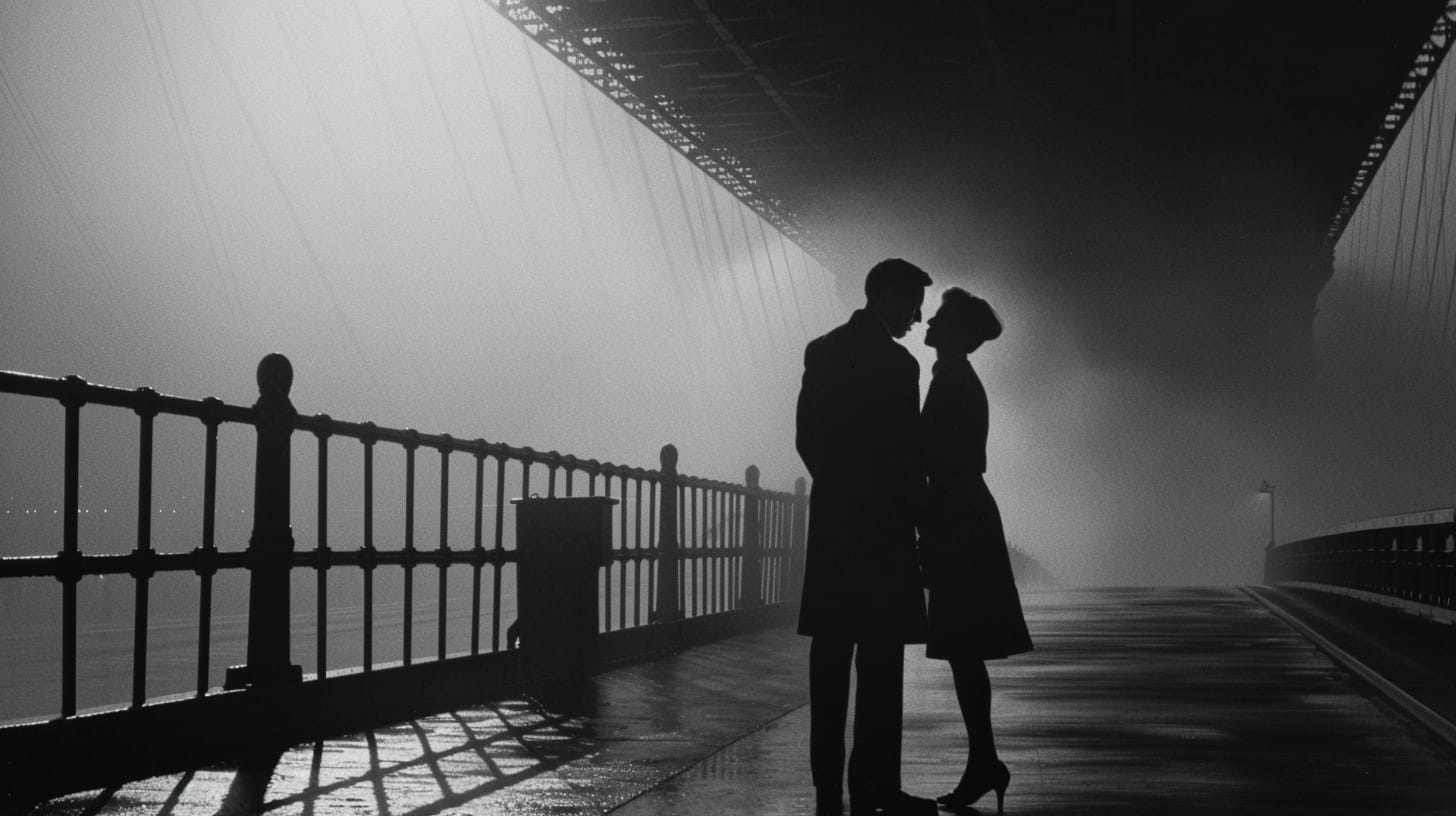
Golden Age of Cinema: Revolutionizing Techniques and Lighting in Film 🌟
While the "Golden Age" of Hollywood in the 1920s and 1930s was defined by the rise of studio systems and iconic stars, it was also a period of groundbreaking advancements in lighting techniques, which played a crucial role in setting the disposition and atmosphere of films.
Role of Lighting in Mood Setting ✨
Three-point lighting became the industry standard, establishing a foundation for mood and character portrayal.
It plays a crucial role in setting the emotional tone and visual environment of a scene, influencing the audience's response and perception of the story.
From the soft, diffused lighting of romantic comedies to the harsh, stark lighting of horror films, cinematographers utilized light to immerse audiences in the film's universe.
Camera movements 🎥
The invention of the dolly and crane allowed for smoother camera movements, adding dynamism to storytelling.
Editing techniques 🎞️
Innovative editing styles like montage and close-ups emerged, enriching the emotional impact of films.
One such example is the legendary scene from Fritz Lang's Metropolis (1927) where the robotic Maria is introduced through a low-angle shot, emphasizing her imposing figure and foreshadowing her destructive role. This use of camera angle and composition became a signature of the film noir genre, influencing countless filmmakers for decades to come.
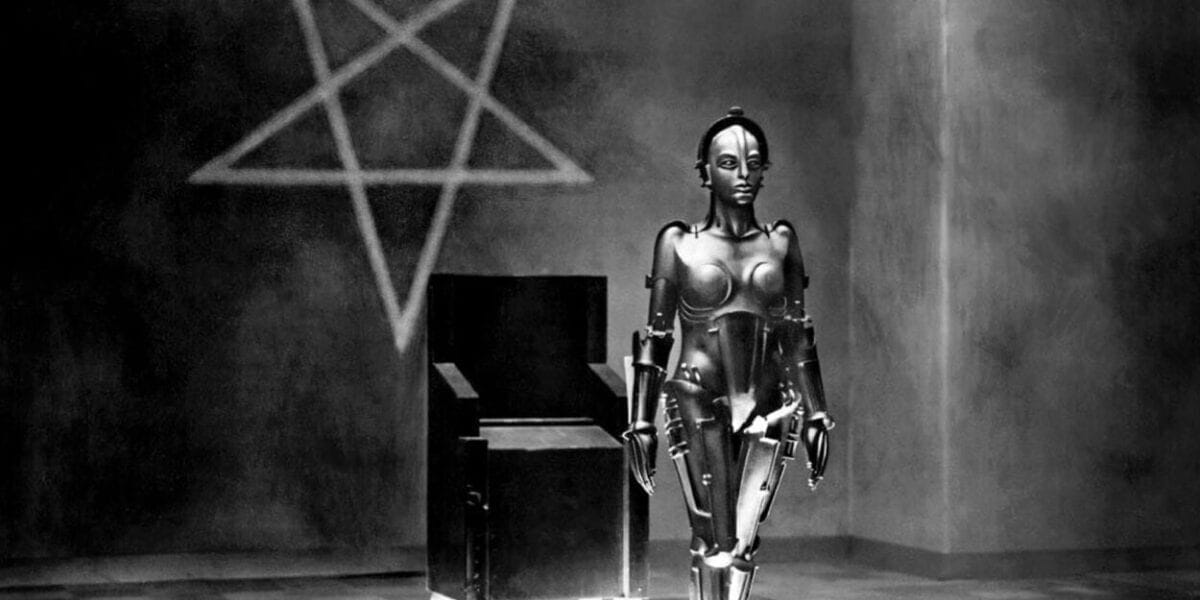
The Transition to "Talkies": A Sound Revolution in Cinema🎙️🎬
The transition to "talkies" in the late 1920s presented a significant technical challenge. Studios had to invest heavily in soundproof stages and recording equipment, with the average cost of a film nearly doubling between 1927 and 1929. However, this technological leap opened doors for new narrative possibilities, allowing filmmakers to explore dialogue-driven stories and create a wider experience for audiences.
The Impact of Color in Cinema 🎨🎬
The introduction of color film in the 1930s and 1940s revolutionized film aesthetics. Early color films like The Wizard of Oz (1939) and Gone with the Wind (1939) utilized vibrant colors to create fantastical worlds and enhance emotional responses. Color became a powerful storytelling tool, capable of symbolizing emotions, setting moods, and establishing visual themes.
✨ As we reflect on the golden age of cinema and the technological advances that shaped it, we recognize the transformative power of cinematic techniques, color grading, and lighting in film, as artistic tools for expression and as essential components of the storytelling process.
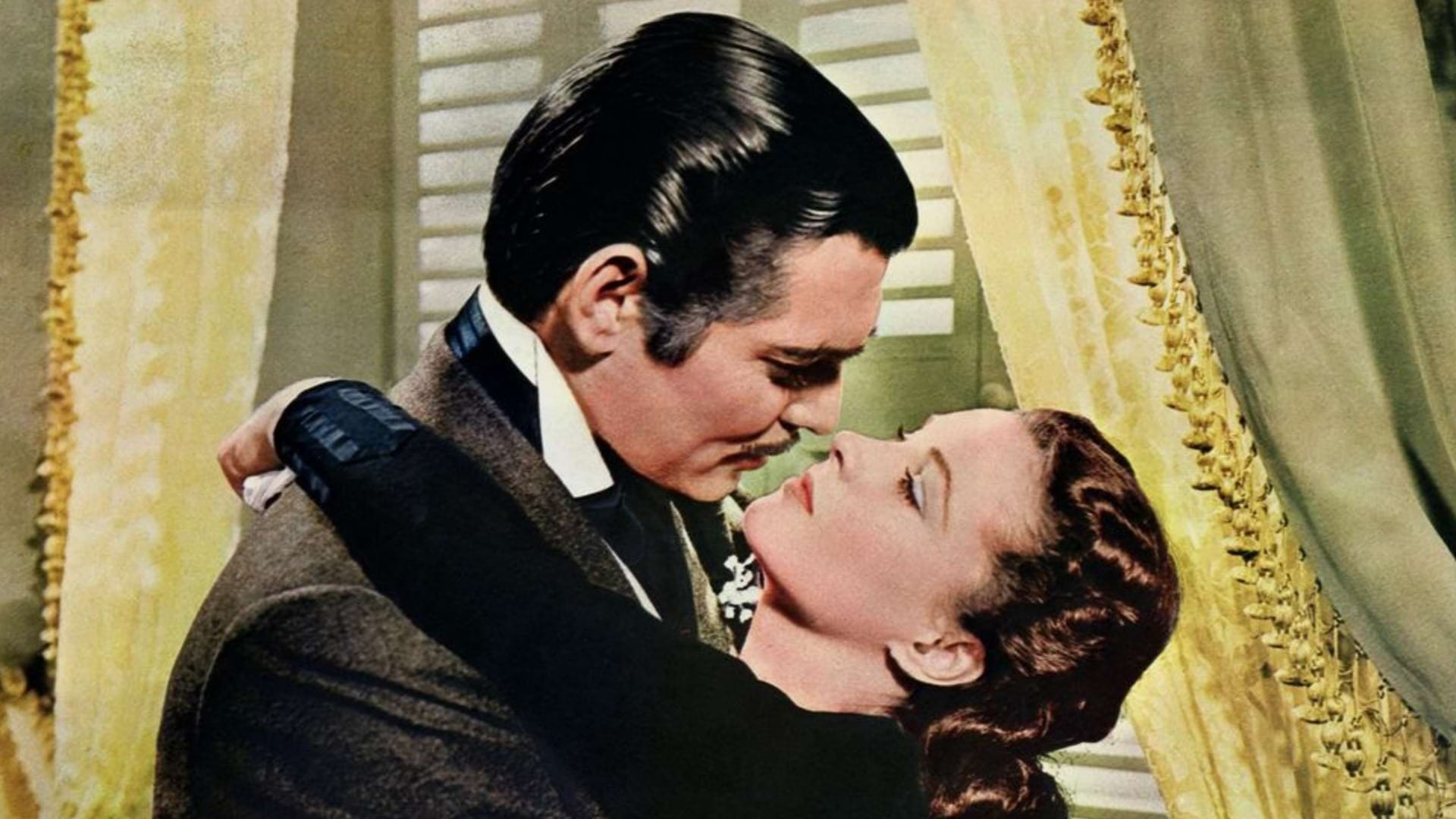
The Rise of Digital Cinematography: Breaking Boundaries 📹💥
The late 20th and early 21st centuries saw a transformative shift in the world of cinematography with the advent of digital technology.
Digital cameras offered filmmakers unprecedented flexibility, allowing for easier manipulation of image quality, resolution, and post-production workflows.
Visual Effects: Pushing the Limits of Imagination 🌌🎥
Digital technology revolutionized the field of visual effects, enabling filmmakers to create breathtaking spectacles and immersive worlds that were previously unimaginable.
CGI (Computer-Generated Imagery) became an integral part of filmmaking, facilitating the creation of fantastical creatures, epic landscapes, and larger-than-life action sequences.
The Transition to Digital Cinematography: Embracing Innovation 🔄
Filmmakers gradually embraced digital cinematography as technological advancements improved image quality, low-light performance, and reliability.
Directors such as George Lucas, Steven Spielberg, and Wachowskis, were early adopters of digital filmmaking, recognizing its potential to streamline production processes and reduce costs.

Technological Breakthroughs in Film: Pioneering New Frontiers 🚀🎬
Innovations such as high dynamic range (HDR) imaging, virtual production techniques, and real-time rendering have transformed the filmmaking landscape, blurring the lines between live-action and animation.
Digital streaming platforms have opened up new avenues for independent filmmakers to create and distribute their work, democratizing the film industry and fostering greater diversity of voices.
Challenges and Opportunities: Navigating the Digital Landscape 🌐💼
While digital technology has democratized access to filmmaking tools, it has also presented challenges such as digital piracy, data security concerns, and the preservation of digital assets.
However, the digital revolution has also created collaboration, innovation, and experimentation, empowering filmmakers to push the boundaries of storytelling and visual expression.
The Future of Cinematography: Embracing Digital Innovation 🌟🎥
As technology continues to evolve, the future of cinematography holds endless possibilities for creative expression and artistic exploration.
✨As we reflect on the digital revolution in filmmaking, we recognize the profound impact technology is having on every aspect of filmmaking, from visual effects to everyday workflows to the revolutionary breakthroughs that continue to shape the future of cinema.

Current Trends and Future Outlook in Visual Storytelling🔮
Contemporary filmmakers are exploring new avenues in visual storytelling, pushing the boundaries of traditional techniques to create immersive and engaging cinematic experiences.
Pioneers of cinematic visuals such as Stanley Kubrick, Akira Kurosawa, and Alfred Hitchcock are celebrated for their innovative use of composition, framing, and visual symbolism.
✨ Their iconic shots, such as the "one-point perspective" in Kubrick's "The Shining" or the "Rashomon effect" in Kurosawa's "Rashomon", have become synonymous with cinematic excellence and continue to inspire filmmakers worldwide.
From the vertiginous crane shot in Orson Welles' "Citizen Kane" to the haunting tracking shot in Martin Scorsese's "Goodfellas" iconic shots in film history serve as enduring symbols of cinematic brilliance.
✨ These memorable images not only showcase technical prowess but also encapsulate the thematic essence of the films in which they appear, leaving an indelible mark on the collective consciousness of audiences.
Enjoy incredible aesthetic moments from Orson Welles' "Citizen Kane" with us!
Now let's turn to explore the current trends, it offers insight into the evolving landscape of visual storytelling and the innovative directions it may take in the years ahead.
Current trends in Cinematography 🎥
While the line between aesthetics and technical advancements can blur, here are some current trends in filmmaking that particularly influence the visual style of movies:
- The Neon Renaissance: Vibrant neon colors and futuristic lighting are making a comeback, inspired by films like "Blade Runner 2049" (2017) and "Drive" (2011). This trend evokes a sense of urbanity, technological advancement, and sometimes, a dystopian atmosphere.
- Minimalism and Naturalism: Stripping down visuals to emphasize raw emotions and focus on character interactions. This can involve using natural light, simple set design, and muted color palettes, as seen in films like "Marriage Story" (2019) and "The Florida Project" (2017).
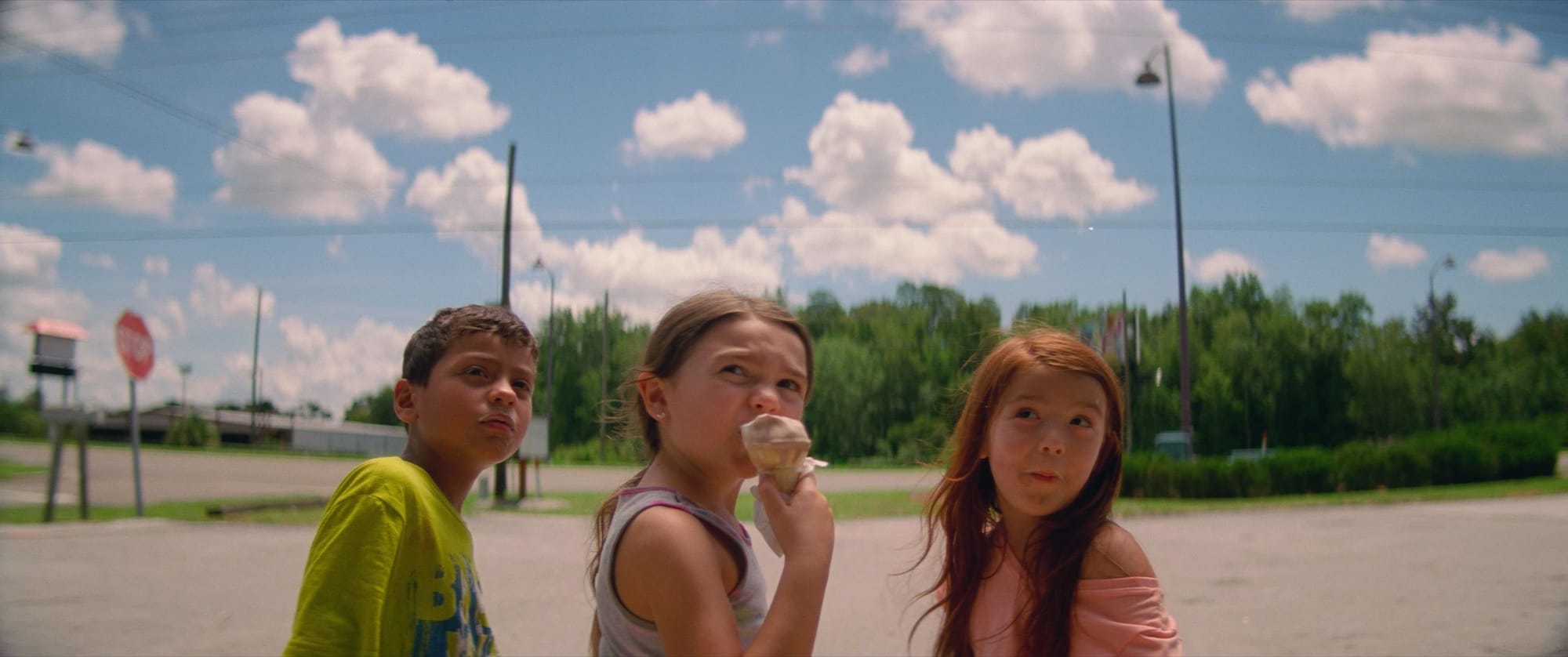
- The "Handheld" Aesthetic: Shaky camerawork and handheld shots mimic a more personal, documentary-style experience. This technique injects a sense of immediacy and realism, often used in films like "Dunkirk" (2017) and "The Blair Witch Project" (1999).
- Aspect Ratio Experimentation: Moving beyond the traditional widescreen format, filmmakers are exploring different aspect ratios like the "square" format used in "The Lighthouse" (2019) and the "cinemascope" format for a grander, epic feel in films like "The Revenant" (2015).
- Utilizing Practical Effects Alongside CGI: A resurgence of practical effects, like building physical sets and using puppets or animatronics, alongside CGI (Computer-Generated Imagery) to create a more tangible and grounded visual experience. This approach is seen in films like "Mad Max: Fury Road" (2015) and "Dunkirk" (2017).
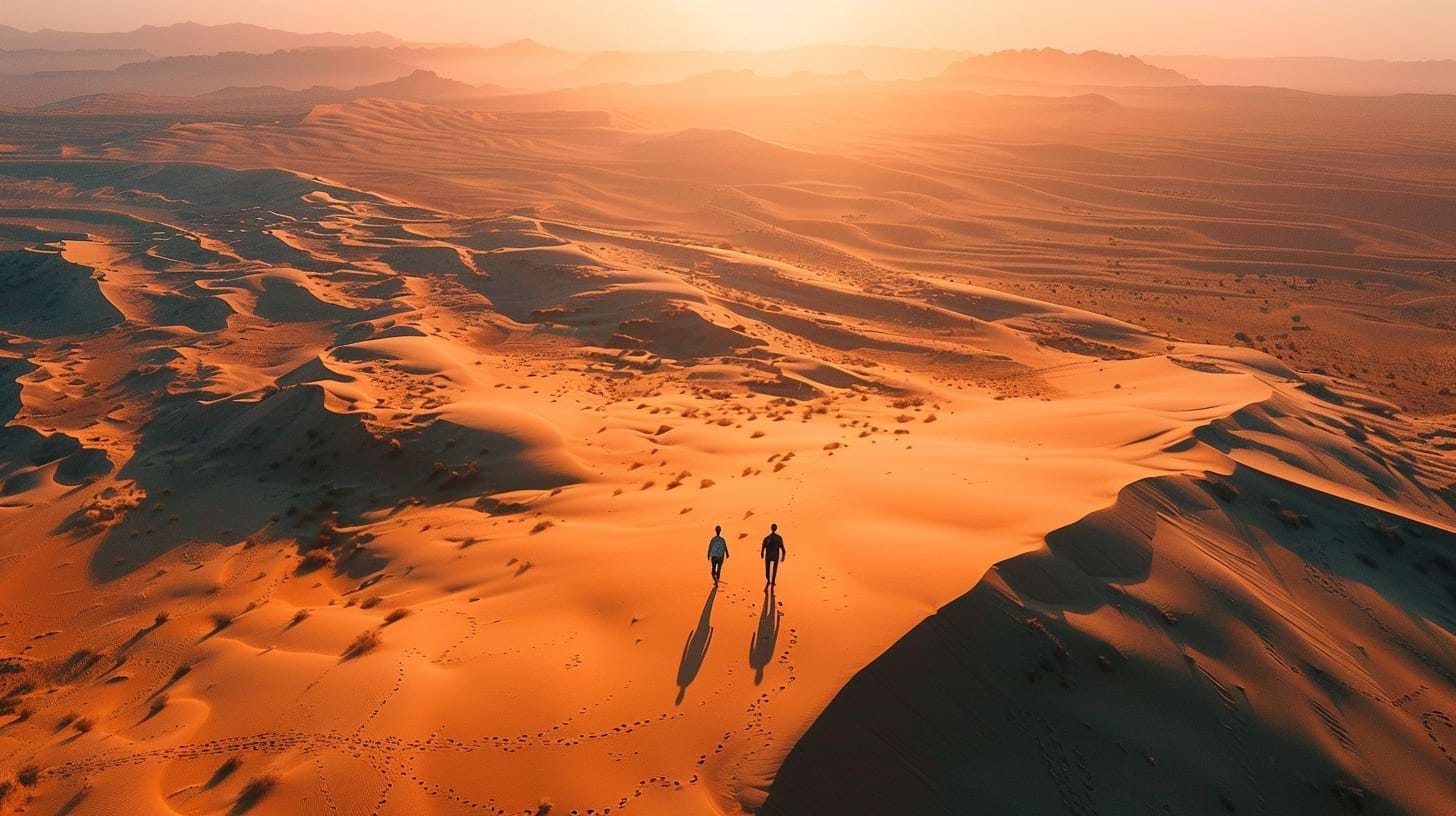
✨ These trends showcase the ever-evolving nature of filmmaking aesthetics, with filmmakers constantly pushing boundaries and experimenting with new techniques to create visually captivating and impactful stories.
The Enduring Legacy of Cinematography and the Power of AI-Technology 🎥🤖
Cinematography has come a long way since its beginnings, evolving from silent black-and-white films to the stunning visuals of today. Through artistic choices like lighting, camera angles, and composition, cinematographers have shaped the way we experience stories on screen, leaving a lasting impact on cinema and culture itself.
As the future of filmmaking unfolds, it's clear that technology will continue to play a vital role. However, the importance of human creativity and storytelling remains paramount.
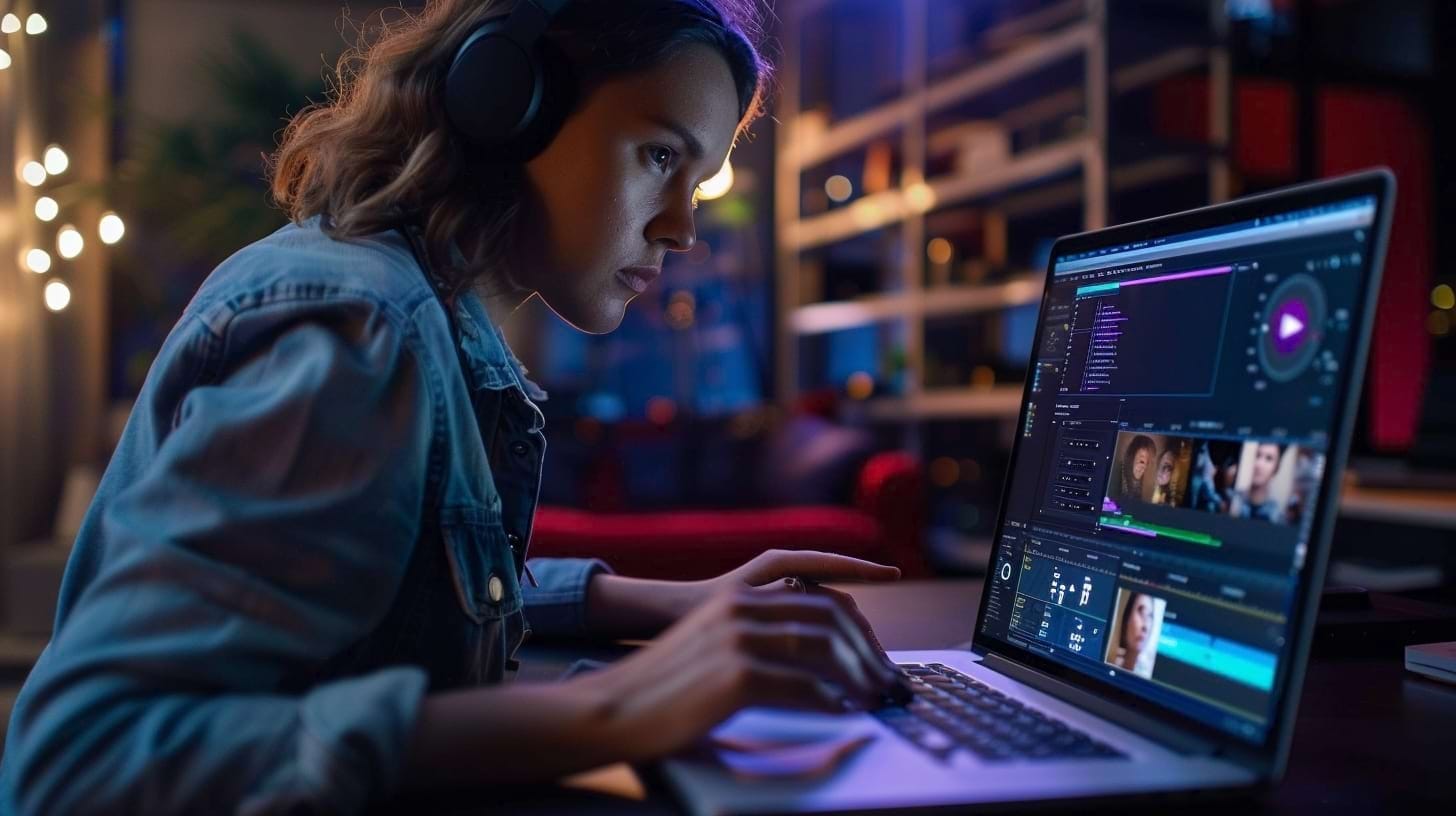
✨ This is where Filmustage comes in. By streamlining workflows and automating tedious tasks, Filmustage empowers filmmakers to focus on what truly matters: realizing their creative vision. From script breakdown to scene analysis, Filmustage equips filmmakers with the resources they need to navigate the complexities of modern production while fostering collaborative creativity.
From Breakdown to Budget in Clicks
Save time, cut costs, and let Filmustage’s AI handle the heavy lifting — all in a single day.